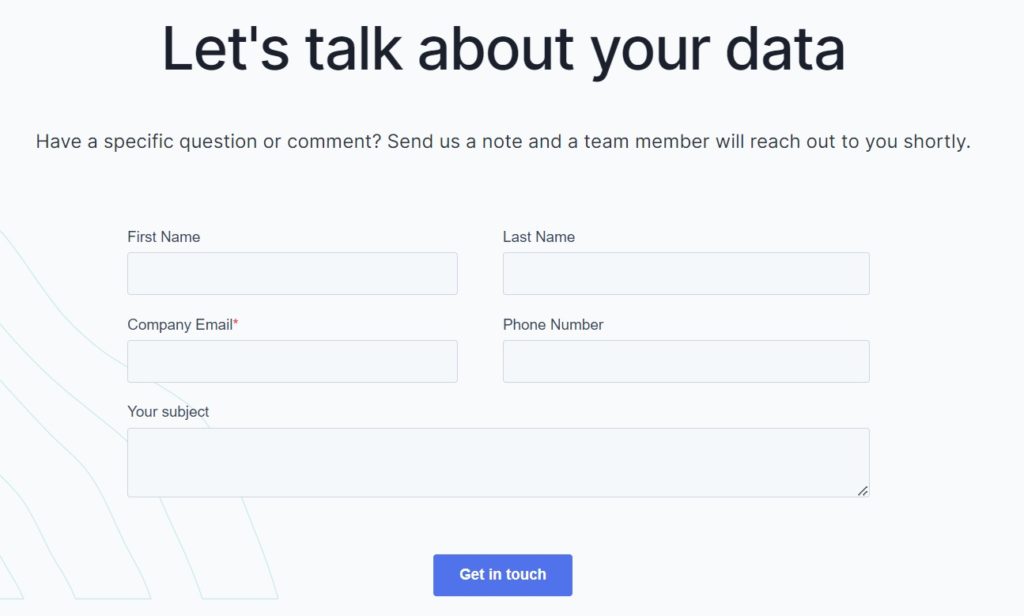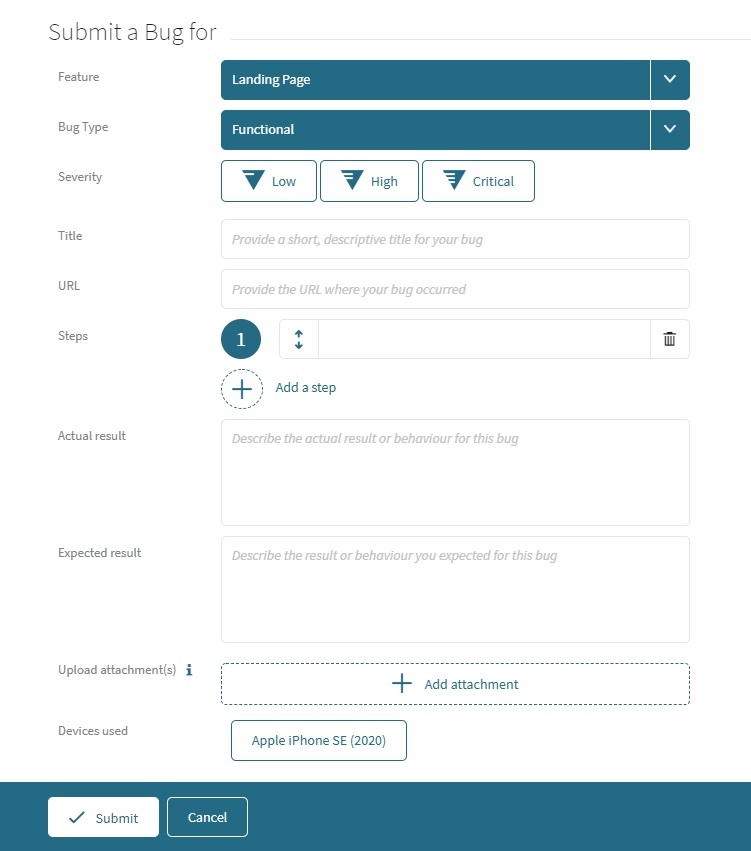Collecting customer feedback is an effective strategy for determining your target audience’s needs and preferences. Positive feedback also increases customer engagement and builds a good reputation for the business. While constructive, negative feedback might help to identify the areas they need to improve.
In this article, we’ll dive into the importance of customer feedback and explore 5 effective ways to collect it. We’ll also share the best practices for analyzing and utilizing the feedback to enhance customer experience.
Let’s get right to it.
4 Types of Customer Feedback: Determining What To Leverage
Customer feedback comes in various forms. Some of the most common types include:
Direct feedback. The type of feedback from users directly given to a business. It may come through customer service emails, phone calls, or in-person conversations.
Indirect feedback. Customer writing feedback using different platforms like online reviews and social media. You can also consider word-of-mouth recommendations as indirect or unsolicited feedback.
Complaints and questions. It combines direct and indirect customer feedback. Customers send complaints or questions through email, social media channels, or customer complaints service.
Solicited feedback. It’s the feedback that businesses actively obtain from customers. It’s typically in the form of online surveys, focus groups, or user testing.
Understanding the different types of customer feedback can help businesses meet their customer needs better. They can tailor their feedback collection methods and response strategies.
The key to success is properly analyzing each piece of feedback and responding to it appropriately. Do it well, so your business can improve products, services, and overall customer experience.
5 Smart & Valuable Ways to Collect Customer Feedback
Let’s explore effective methods to collect customer feedback to help you make informed decisions and grow your audience.
1. Surveys
Surveys are easy to use, accessible, and cost-effective. It also provides a more accurate result because customers record their own experience. As a result, businesses gain these advantages:
- Reach a larger audience
- Access real-time data that you can analyze and act upon promptly
- Efficiently gauge customer satisfaction, preferences, and behaviors
There are different types of customer surveys, and each is beneficial depending on your marketing goals. If you need help figuring out where to start, here are 2 popular customer survey types. We also include what they aim to achieve and when to use them.
1.1 Customer Satisfaction Surveys
Use a customer satisfaction survey if your goal is to convert happy customers into brand advocates. As the name describes, it measures customers’ satisfaction with a particular product, service, or experience. They may include survey questions about overall satisfaction, specific aspects of the experience, and the likelihood of a recommendation.
With these details in mind, select one as the primary objective and write clear, simple questions. When choosing a question, consumers prefer close-ended questions because they’re easy to accomplish. You can also make it easier to measure by adding the right type of satisfaction scale:
- Descriptive scale. It provides a more detailed understanding of how customers feel about a particular aspect of their experience. You can ask customers to describe their satisfaction level using adjectives such as “excellent,” “good,” “average,” “poor,” or “terrible.”
- Picture scale. The ideal option for people who may have difficulty with reading or language barriers. It uses images or emojis to measure the level of satisfaction.

- Rating scale: Asking customers to rate their satisfaction level on a scale from 1 to 10, with 10 being the highest. The most popular example is an NPS (Net Promoter Score®) survey. It determines how likely customers are to recommend a brand/product/service to others.

You can calculate the customer satisfaction score (CSAT) after collecting the customer satisfaction feedback. Here’s the formula:
(The total Number of 4 and 5 responses) ÷ (Number of total responses) x 100 = % of satisfied customers.
You can look at the infographic below to know what a good score is across different industries.

You can then collate the survey results and leverage them as social proof to include in your website, just like what Medical Alert Buyers Guide did. Rather than just giving it a section on the homepage, they assigned an independent review page for elderly medical devices not just to highlight the satisfaction score but also to provide all the needed details a prospective buyer will need to know.
1.2 Market Research Surveys
Investing in market research can help companies make data-driven decisions and increase their chances of success in the marketplace. You can use it to gather key demographic information to understand your target audience better. It’s also helpful in getting deeper customer insights to solve specific problems about your product or brand.
Let’s say you’re an ingredient and chemical supplier for cosmetics. The types of questions you may ask to understand your potential customers may range from:
- How often do you buy cosmetics? Rarely, frequently, very frequently, or do not shop
- Do you buy a cosmetic product after watching its advertisements? Yes, no, or maybe
- What type of cosmetic products did you prefer to purchase? Ayurvedic, chemical, or both
- What motivates your purchasing process? Discount, advertisement, or need for the product
- Which factor influences you the most while choosing your cosmetic brand? Peer group, family, advertisement, or other
Cosmetic products are made with different chemicals and substances, which some provoke allergic reactions. Include the common allergens in cosmetics and ask your current customer base and prospects for their input.
You can ask questions like ‘What cosmetic ingredients are you allergic to?‘ Then list down all various cosmetic ingredients as options. Leave a message box so participants may include a specific ingredient not available in the choices.
A market research survey is also the best survey type to measure customer experience. You need to identify which stage in your customer journey you want to analyze and measure.
- Pre-sale: What are your current needs and pain points related to [product/service]? How do you typically research and evaluate [product/service] before purchasing?
- Sale: What led you to purchase [product/service]? How easy was finding the information you needed to make a purchase decision?
- Post-sale: How satisfied are you with purchasing [product/service]? Did the product/service meet your expectations?
You can use CSAT and NPS to measure customer experience. You can use Customer Effort Score (CES) and churn rate if insufficient. Here’s the equation for CES:
(Total sum of responses) ÷ (Number of responses)
You can refer to the screenshot below for the customer churn rate formula.
2. Live Chat
Consumers expect businesses to respond quickly, 24/7. That’s why live chat has become their favorite communication channel for customer service. It currently has a response rate of 7 seconds.
It’s also intuitive and provides real-time insights into the customers’ opinions and thoughts. Business leaders also prefer live chat because it’s proven effective in increasing conversion rates (40%) and revenue (48%). They often integrate their CSAT surveys, also called customer feedback surveys, into the live chat. Its purpose will vary depending on the data/feedback you want to collect or the problem to study.
- Sales feedback
- Product feedback
- Customer service feedback
- Identify the potential risk of churn
- Gain valuable insights into your customer sentiment

Some also use live chat to gather info on product issues. A baseball supplier sets a good example. They use this opportunity to encourage dissatisfied customers to help them uncover problems with their baseball pitching machines or sports equipment. Identifying and solving the problem quickly converts unhappy customers into loyal customers.
You can collect live chat data using chatbots, and live chat software can capture, analyze, and store customer data in real time. Most companies, particularly eCommerce, use chatbots alongside live chat software. It ensures immediate responses for general and complex customer issues.
When designing the survey questions, avoid asking too many questions or using complex language that may confuse customers. Remember that customers may be multitasking or in a rush, so make it easy for them to provide feedback.
A general rule of thumb, a live chat survey should be brief and take at most 5-10 minutes to complete. However, the number of questions may vary depending on the complexity of your product or service. Also, the type of information you’re trying to gather. The screenshot below is the simplest CSAT survey you can implement.

Here’s a list of additional questions you can ask. To give you real-life examples, these questions are tailored to solar generators as the product.
- How easy was it to set up and use the solar generator?
- What features of the solar generator did you find most useful?
- How satisfied are you with the overall quality of the solar generator?
- Were there any features of the solar generator that were missing or could be improved?
- Is there anything else you want to share about your experience with our solar generator product?
Remember to use an open-ended question. It encourages customers to share their thoughts using their own words. This will help you gather more detailed and meaningful feedback to improve your product and customer satisfaction.
Pro Advice: Analyze The Data
Collect and analyze the data to identify trends and areas for improvement. Look for patterns in the feedback and use the insights to make data-driven decisions. Live chat software often includes a dashboard that displays the summary and complete view of all the feedback you’ve gathered. It makes it easier to monitor and analyze the tasks at hand.
3. Contact Form
The simplest approach to collecting customer feedback is through the contact form. A contact form is known as a valuable marketing tool for lead generation. But it can also help collect customer feedback. The key to success is creating a contact form that is user-friendly and easy to complete.
Ensure it includes fields for customers to provide their name, email address, and phone number. Remember to provide a bigger section for the message. It gives customers ample space to write their concerns. An excellent example is Estuary, a unified DataOps platform provider that manages CDC and ETL pipelines in real time.

Estuary creates their contact form as flexibly as possible. Hence, customers can freely leave a message no matter what their intention is. If your customers need to send an attachment, they can use their chat-like help box.
Wondering what tool you should use for such forms?
Sender is a perfect one — it has various powerful features, such as email and SMS automation, smart segmentation, and much more.
One of the best features is an easy-to-use form and popup builder for you to craft your perfect contact form in minutes! And you can do it absolutely free!

4. Website Heatmap
Business owners and marketers use a heatmap to optimize the website’s user experience (UX) and user interface (UI) design. This combination, plus a brilliant website design, translates to higher revenue for your company. But for years, it has also proven beneficial in collecting customer feedback.
Customer feedback isn’t necessarily expressed in words. Some customers provide implicit feedback — through their behavior. Heatmaps visually represent where customers are clicking, hovering, or scrolling on your website. Through these activities, you can identify areas that work well and may need improvement. They can also understand the following customer behaviors:
- Which links and buttons are customers clicking on the most
- Which web pages are getting the most attention and the least
- How long are customers staying on each page of your website
When setting up a new heatmap, you need to customize the parameters and settings. Which data do you want to track? The heatmap tool allows you to track from mobile, tablet, or desktop. Choosing all is also an option, and it will provide three independent reports.
The next step is choosing the specific date and time it will start and end. The standard option is starting immediately or scheduling it.
The last step is customizing the advanced settings. Specify what you want to track and omit. It also includes the delay timer to set the exact time it will capture snapshots. If you’re a new user, you can run the default settings. The screenshot below is the result when you choose the default tracking option.

Pro Advice: Test Design Changes
A great user interface design contributes to a positive user experience. A website heatmap can make that possible by showing the effectiveness of design changes. Compare two versions of the heatmap to see which provides the most valuable insights. You can adjust the changes accordingly.
5. Bug Reports
Better customer experience equates to more sales opportunities. We’ve previously focused on building successful UI and UX for websites. Now, we’ll focus on software programs and applications. You can improve its UI and UX by collecting feedback through a bug report.
A bug report is a formal document describing an issue or problem in a software program or application. Your users will submit feedback based on their interaction with the application. For example, let’s take a bug report for a word game app. The possible issue is that users experience lags and glitches, preventing them from progressing to the next level. Here’s a sample bug form to give you an idea of the important details the users need to input.

Some bug forms include a specific box for additional information. It’s ideal for including the details of what the users try to do to fix the problem. They can also use it to specify the exact time the problem happens. All these actionable insights will help the developers improve the product development objective.
Pro Advice: Create an Assessment Process for a Bug Report
Creating an assessment helps determine the problem’s severity and prioritize it for resolution. Not to mention the ease of organizing your knowledge and assigning it to the right team member.
You can start by identifying the impact of the bugs and categorize each depending on their severity level. You can use the common severity levels: critical, major, moderate, and minor. Once everything is in place, start assigning the priority level.
Remember to provide recommendations on how to reproduce the bug, suggestions for fixing the bug, etc. The last step is communicating the assessment process to the relevant stakeholders (developers, testers, and project managers).
Key Takeaways: Customer Feedback
As a business owner, you know the key to success is keeping your customers happy. One way to do that is by listening to their comments and recommendations. Use these valuable insights to enhance the products, services, and customer experience. Here are takeaways you can keep in mind:
- Make the best use of surveys using either a picture or descriptive scale.
- Use live chats not just to cater to customer questions quickly but also to gather info on product issues.
- Make contact forms user-friendly and easy to complete.
- When using heatmaps, specify what you want to track so you don’t get lost in a sea of data.
- Create an assessment for a bug report to determine severity.
The 5 methods above are only a few you can use to gather qualitative and quantitative data, which can be incredibly valuable when making crucial business decisions. You can experiment with other options, like online reviews and social media comments until you get the desired result.
Also read:
- Measure Satisfaction: 11 Survey Email Examples & Templates
- 15+ Survey SMS Text Message Examples
- What is Direct Response Marketing? Elements, Strategies & Examples
Author Bio
Burkhard Berger is the founder of Novum™. He helps innovative B2B companies implement revenue-driven SEO strategies to scale their organic traffic to 1,000,000+ visitors per month. Curious about what your true traffic potential is?





